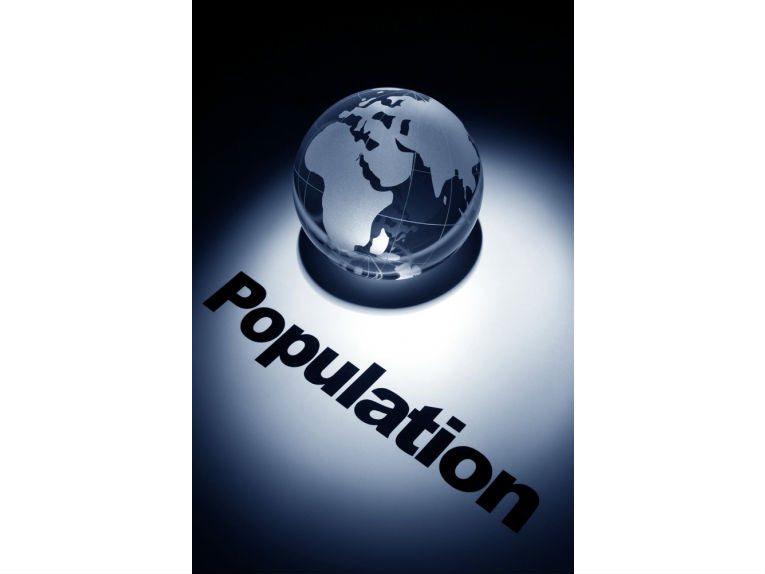There is no secret in the fact that the population of our world is growing. From 3 billion in 1960, it now stands at just over 7 billion and by the middle of the century, if you accept the worst-case scenario, it could be nearly 11 billion.
Putting aside for a minute the problem of feeding all these extra people, there will also be the question of how they will cope in an ever-reducing amount of living space.
Back in the 1960s an American specialist in animal behaviour, John B Calhoun, conducted a series of experiments using mice. He introduced four pairs of mice into what was known as a Utopian universe. This was actually a 9-foot square metal pen with sides 4-foot 6-inches high. There was plenty of food, water, nesting boxes and nesting material and no predators. There was, in fact everything that a mouse could wish for.
From the original eight mice the population doubled every 55 days. By day 315 the number had reached 620, but at this point the rot began to set in. The scientists noted that the normal patterns of social behaviour were gradually beginning to break down.
Young mice were getting wounded and expelled from their nests before weaning was complete; dominant males were no longer able to maintain their territory and their females; females were becoming aggressive; and otherwise passive, non-dominant males increasingly began to attack each other.
The last surviving birth was on day 600 and the social breakdown continued as the colony drifted towards extinction. By now the females had ceased to reproduce and the males had become completely withdrawn, never engaging in courtship or fighting, but simply spending their time eating, drinking, sleeping, or grooming themselves.
In this Doomsday Scenario Calhoun saw the fate of his mouse population as a metaphor for the potential fate of the world's human population.
Fortunately this gloomy prediction is by no means a foregone conclusion. To begin with, population growth is showing signs of slowing down as the general standard of living throughout the world is slowly rising and this trend is highest in the developing world. Rather than tipping towards a population of 11 billion by 2050, a recent forecast puts the number closer to 9 billion.
However, it is clear that by the middle of this century the world will have a great many more mouths to feed and stomachs to fill. Most of these additional people will probably inhabit existing urban areas. These will simply get bigger and this will impose further stress on the environment in providing power, energy and food. Urbanisation will become the primary driver of deforestation.
Another factor that is not always taken into account is that as people become more prosperous, they eat more. If the body mass index (BMI) of the world's population were to increase to be on a par with the population of the United States, this would be equivalent to having to feed an additional 500 million people.
Yet another sign of increased prosperity is a rise in meat consumption. Production would need to double if those in the developing world were to eat as much as those of the developed world.
To take China as an example: in 1978 meat consumption in China was 8 million tons; but by 2010 it had increased to 71 million tons, which is around 11 lb per person per year. If personal meat consumption in China were to reach consumption levels of the US, China would need 75% of current world beef production and 80% of broiler chickens.
By 2050, not only will it be necessary to feed a couple of billion additional people, but most of them will expect better food than they are currently getting.
As urban settlements get bigger, the amount of land available for growing food will get smaller, so the only answer is to increase productivity of existing land. Cattle, for instance, take up a great deal of space and additional land is needed for the growing of fodder crops. Cattle are also a major contributor to greenhouse gas emissions. A possible answer all round might be to cut the number of cattle and wean people off meat. Of course, this might take some persuading.
Technology has moved into the world agricultural industry. This of course is nothing new since from the very earliest times farmers have selected and developed particular seeds for particular soils.
Crop improvement and crop breeding has continued in recent years with new strains being developed that are resistant to herbicides and pests. These have simplified production, reduced costs and decreased the amount of pesticide. This in turn has reduced the number of times a farmer needs to spray his fields, which then cuts the amount of greenhouse gas emission.
Approximately 10% of world arable area now produces crops that come from what is known as genetically modified seed. Most of this is maize (corn), Soya, cotton and oilseed rape. It has been estimated that between 1996 and 2010, the use of these crops has meant that 400 million kg of pesticide has not been needed. In 2012 this lack of needing to spray is estimated to have reduced global CO2emissions by 6%.
The rise in profitability for farmers has been significant and the benefits seem to have been greatest in the developing countries.
Alone in the world Europe stands out as being opposed to the use of these new technologies in agriculture. There are two very distinct and opposing beliefs with respect to the use of genetically modified seed. Passionate views come from both sides, but the bottom line is that in 38 years time, if estimates are to be believed, an additional 2 billion people will need feeding.
Somehow this must be achieved if we are to avoid a doomsday scenario.










